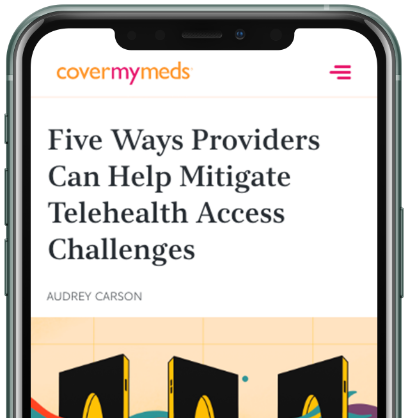Solving Abandonment – Price Transparency at the Point of Prescribing
This year at HIMSS19, I am excited to be leading a panel discussion at booth 3278 (February 13th from 3 – 4 p.m.) on a hot topic that is leaving patients and providers frustrated at the state of healthcare.

Today’s consumers have visibility into how much products or services will cost long before reaching the point-of-sale. Not only that, they are often presented with affordability options to help save money and manage costs.
This culture of price transparency and consumer choice is quickly spreading to the health care industry and patients are now demanding more control over the cost of their care and are looking to their providers for answers. In a recent direct-to-patient survey with 1000 respondents, 75 percent of patients reported they have received a prescription that cost more than they expected, and 50 percent did not fill a prescription for this same reason.2018 Real-Time Benefit Check National Adoption Scorecard
In addition to prescription abandonment, patients are feeling the sting of high out-of-pocket costs more than ever and this is negatively impacting medication adherence. Patients often lack adequate health insurance to cover the cost of care with ~10 percent of non-elderly adults reported as uninsured and ~25 percent of insured adults considered “under-insured” in the United States.Key Facts about the Uninsured Population, 2018,How Well Does Insurance Coverage Protect Consumers from Health Care Costs?, 2016
In fact, 69 percent of new patients in 2017 abandoned their prescribed therapies when the price rose above $250.Patient Affordability Part Two, 2018 You may think that $250 for a medication must be an outlier, but the average deductible claim cost patients $270 in 2017.Patient Affordability Part One, 2018With an increasing number of Americans covered under high-deductible insurance plans (43.4 percent in 2018, a 17.9 percent increase from 2011),this is a major problem that will only get worse unless health care stakeholders work together to innovate solutions.High-deductible Health Plan Enrollment, National Center for Health Statistics, 2018
As pressure continues to mount, providers need a solution that can give financially-stressed patients what they want: visibility for how much a prescription will cost at the point of prescribing, before entering the pharmacy, and options to get the best possible price. Current formulary and benefit data available within EHR systems is not up to the task with providers rating their trust in this information at only 5.7 out of 10.2018 Real-Time Benefit Check National Adoption Scorecard
Join the conversation during HIMSS19 at booth 3278 on February 13 from 3 – 4 p.m. to get expert insight and perspective into these challenges and learn how health care stakeholders are working together on cutting-edge solutions to help improve patient pay accuracy, adherence and time-to-therapy for medications. Our panel of experts will include Melissa Paige, Pharmacy Patient Medication Access Principal Coordinator at the University of Virginia Health System, Evan Grossman, Vice President of Integration Services at athenahealth and Dr. Eric Weidmann, Physician and Chief Medical Officer at eMDs.
The latest healthcare insights, floated right to your inbox.



